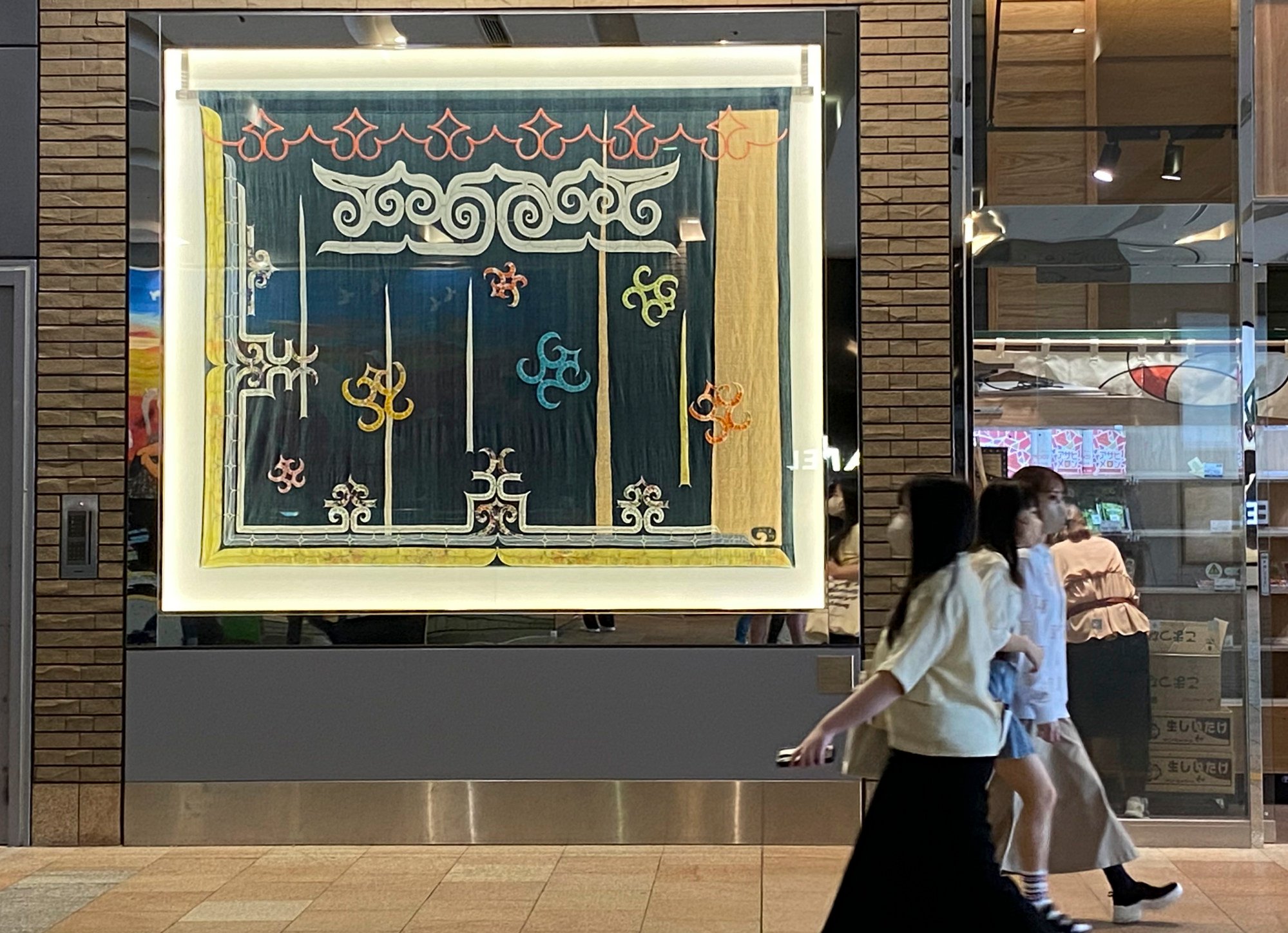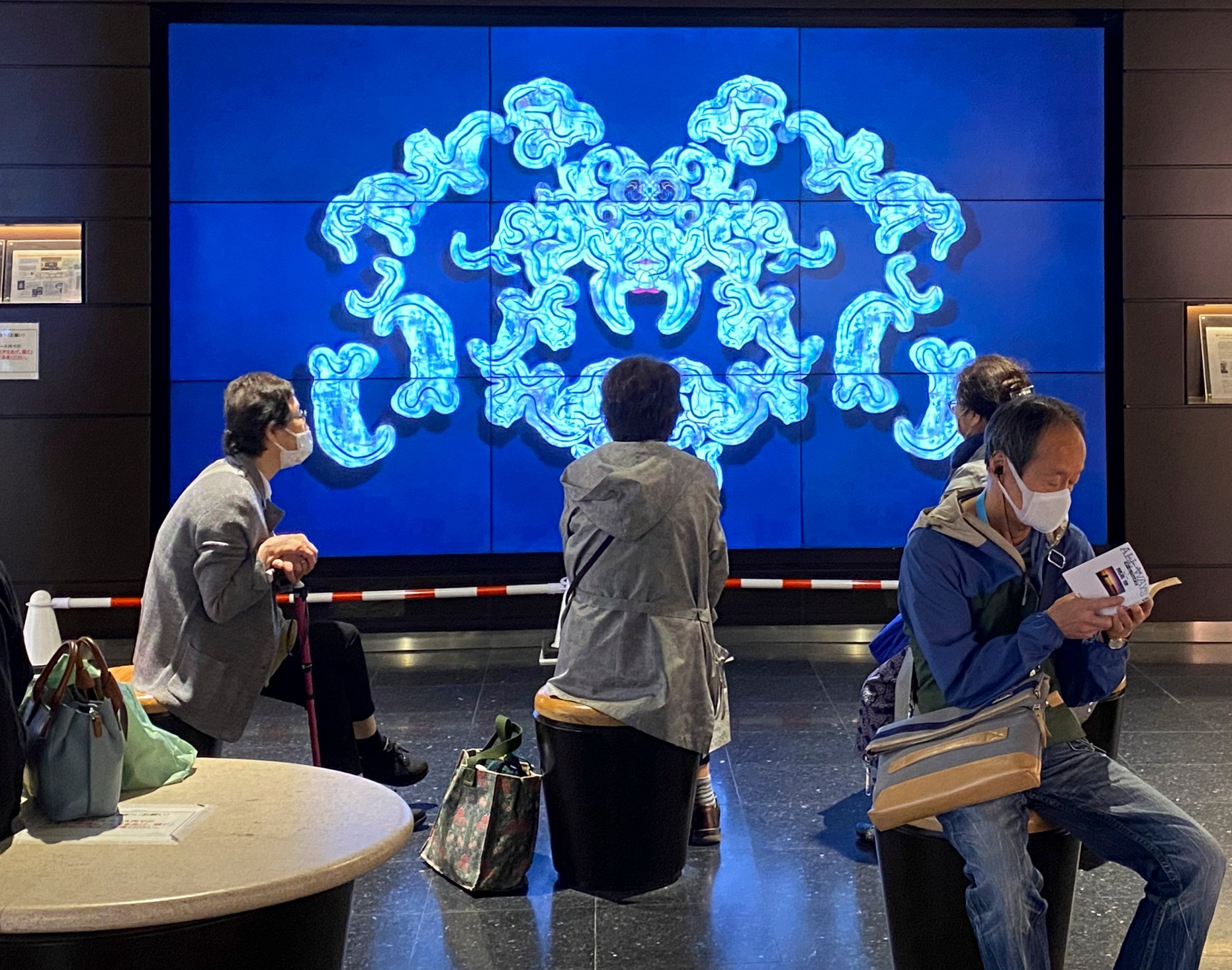
Paint your nails the Ainu way, make embroidery, wear fish-skin shoes, stay in a themed hotel – Hokkaido, Japan celebrates its indigenous people
- On the Japanese island of Hokkaido visitors can learn about its hunter-gatherer first people in a variety of ways, from craft workshops to a luxury hotel stay
- Try on bark-fibre robes – very scratchy – or salmon-skin shoes, sample Ainu cuisine, and snap up souvenirs such iPhone cases, pottery and magnets
The tourist information centre in the small town of Shiraoi is not just a great spot to grab some souvenirs, it also offers an insight into how the first settlers of Japan’s Hokkaido island have secured their future.
For sale alongside pottery and fabrics featuring the swirling designs beloved by the Ainu are magnets, iPhone cases and stickers featuring manga- or cartoon-style depictions of Ainu warriors and kamuy – the indigenous people’s spirit animals.
Tureppon, the mascot of the recently opened Upopoy National Ainu Museum and Park, is another. Her name comes from the word turep, which means “lily bulb” in the Ainu language, and she clutches a walking stick made from a turep stalk and a cake made from its seeds.

It was only in 2008 that the Japanese government recognised the Ainu as an indigenous people.
Why ‘indigenous’ deserves to be word of the year
During the last ice age, when glaciers formed and water levels dropped, mammoths used newly created land bridges to make their way to Hokkaido from Siberia and elsewhere.

Settlers such as the Ainu, hunters who made the most of northern Japan’s increasing bounty, came later – it is believed they arrived in Hokkaido in the 12th century.
Genetic testing has failed to yield many other clues about them, barring connections with a handful of indigenous groups in Mongolia and Siberia.

The Ainu prospered most before and during the Edo period (1601-1868), when they traded with other nations, selling fish and fur, and transporting sake by canoe to China, where they would fill their boats with jewellery and brocade to bring back and sell to the Japanese.
During the Meiji era (1868-1912), the Japanese government annexed Hokkaido and took the Ainu’s land, banning their language and traditional pursuits such as hunting, which had been integral to their way of life.
After the second world war (1939-1945), the desire to promote Japan as an ethnically and culturally homogeneous country caused further erasure, although the tide began to turn in the late 1990s, when growing calls for recognition were eventually heeded.

The 2008 decision added weight to the government funded-Foundation for Ainu Culture’s argument that there should be a national museum dedicated to the indigenous group, and in 2020, the Upopoy National Ainu Museum and Park opened in Shiraoi, 90km south of Sapporo.
Entry is along a pathway flanked by slabs of grey stone etched with images of kamuy – spirit animals such as foxes and bears. If this is the Japanese government’s attempt to make amends, Tokyo must feel contrite; the complex is huge.
In addition to the museum, filled with vast halls stuffed with artefacts, there is a replica of an entire Ainu village, in which visitors can inspect a cise, a thatched dwelling; don a kotan, a traditional attush robe made from bark fibres (which are incredibly scratchy); and join embroidery lessons using wafer-thin slivers of the irakusa plant, used by the Ainu as thread and as strings for instruments.
Malaysian coffee farmers hope to draw tourists to Borneo region
While items featuring manga-style warriors and lily bulb mascots have boosted the Ainu’s appeal to younger generations, the luxurious KAI Poroto hotel is aiming for a slightly different audience, although with a similar goal.
The hot-springs resort opened next door to the Upopoy museum and park in 2022, and every aspect is a tribute to Ainu culture.
The lobby is rich with the fragrance of white birch, which is used by the Ainu to make garments and bowls and employed by the hotel’s architects to line the interior walls.

In my Japanese-style bedroom the coffee table is a slab of stone, which, with the help of a concealed internal light, represents the firepits the Ainu would once have gathered around.
Visitors can soak in two hot springs – one of which is inside a timber-clad, cone-shaped building inspired by Ainu architecture – or lounge by the firepit in the lobby, with its floor-to-ceiling glass walls and views of Lake Poroto. Surrounding the lake are walking trails complete with signs warning of bears.
Activities on offer within the hotel include a masterclass in amulet-making, which involves filling delicate paper with pieces of ikema, a fragrant plant the Ainu believe can ward off evil.
Thanks to my abysmal origami skills, a fellow guest has to come to the rescue by securing my paper folds with neat lengths of string.

There are reminders of Ainu culture in Sapporo, Hokkaido’s biggest city, too.
A wooden statue of an Ainu warrior presides over the railway station’s main concourse, and in a downstairs waiting area, beneath a ceiling adorned with patterns inspired by Ainu embroidery, I watch a video of animations featuring similar designs, set to a soundtrack by Japanese group Marewrew, who perform traditional Ainu songs.
The animations are the work of French artist Boris Labbé, who visited Hokkaido to research indigenous embroidery styles.

Umizora no Haru is modelled on a traditional home and is Sapporo’s – and possibly the world’s – only Ainu restaurant.
The most sought-after spot is in the bamboo-walled private dining room, accessorised with items from the Upopoy museum, including a cooking pot and a beautifully embroidered attush robe made from elm bark.
Artificial smoked fish hang from the ceiling and a carved wooden bear and mounted deer’s head pay further tribute to the Ainu’s reputation as fearless hunter gatherers.

Seafood dominates the menu – there is plenty of salmon, which sustained the Ainu through Hokkaido’s brutal winters – and a highlight is a soup inspired by ohaw, a thick Ainu broth made with salmon or animal bones.
Back in Shiraoi, the Koropokkuru Activity Centre stages a range of Ainu-inspired cultural activities, including one that offers the chance to try on cep’keri, shoes crafted from salmon skin. But my favourite activity is one on offer at Kura, a nearby arts space inside a former sake warehouse.
Workshop participants can paint their fingernails with the Ainu’s distinctive swirls. Whether the earliest settlers would approve is anybody’s guess, but I will take Ainu-inspired nails over a scratchy elm bark attush robe any day of the week.
The writer was hosted by the KAI Poroto hotel.

